
Sanlıkol Program Notes
An Elegant Ritual
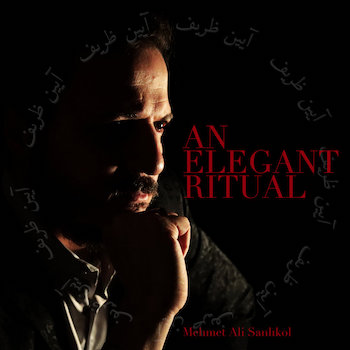 All music composed by Mehmet Ali Sanlıkol (b. 1974).
All music composed by Mehmet Ali Sanlıkol (b. 1974).
The structure of this part of the program is modeled after a Sufi whirling (Mevlevi) dervish ritual (ayin), with influences from John Coltrane’s A Love Supreme. The Mevlevi ayin typically features a central composition bracketed by an opening improvisation and a preparatory piece in front and two upbeat pieces at the end. Here, the central composition has four movements (also like A Love Supreme) with strategically designed appearances of the gongs and the ney (end-blown flute).
1. Prelude
2. The 7th Day
3. Lost Inside
4. An Elegant Ritual
5. Hasret: Anadolu Jazz
The Rise Up
All movements/sections composed by Mehmet Ali Sanlıkol
As a Turkish-American composer I have been saddened and personally affected by the negative attitude toward immigrants, Muslims, and minority communities in the United States lately. As a result, upon Dave Liebman's request, I decided to compose this new piece built on three episodes from Middle Eastern history that chronicle dark and traumatic events followed by human inspiration or transcendental creation.
I. RUMI
The first narrative centers around the great 13th century Sufi poet Rumi, composer of the most beautiful mystical poetry ever written after the murder of Shams (literally "sun" in Arabic), his beloved teacher.
1. The Sun of Tabriz
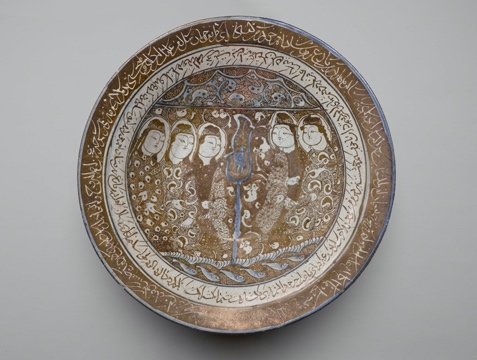
“Bowl of Reflections” with Rumi's poetry, early 13th c.
2. A Vicious Murder
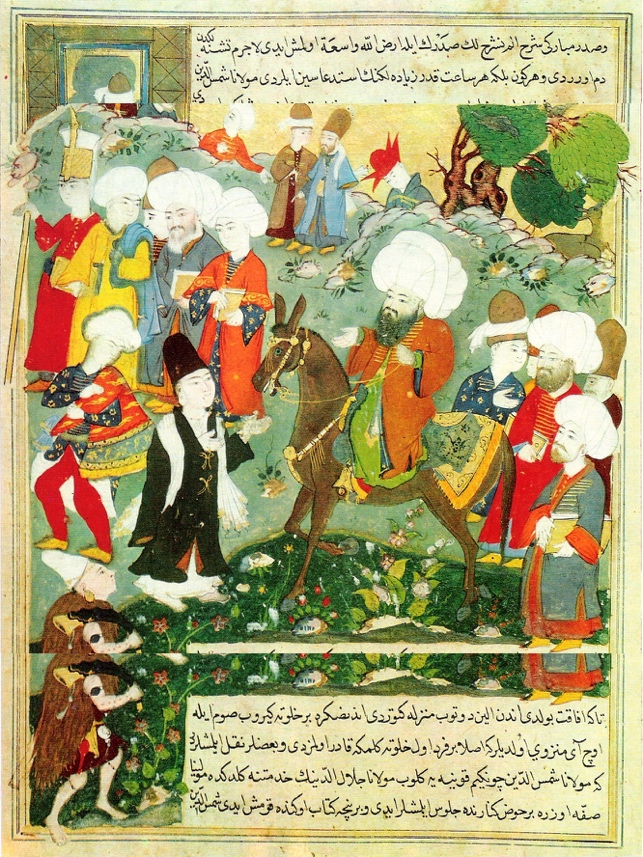
Meeting of Rumi and Shams, in a folio from Jâmi al-Siyar (1598–1603) by Mohammad Tahir Suhravardî
3. Rumi's Solitude
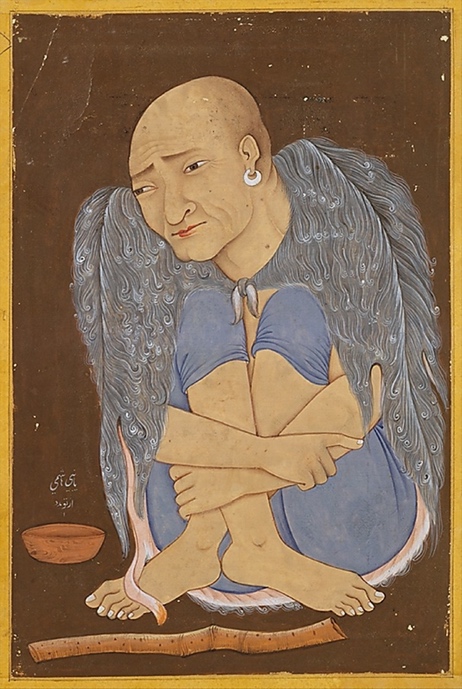
Portrait of a Kalenderî dervish
(Timurid, 15th c.)
Text: Mesnevi I: 1–3 by Mevlana Celaleddin Rumi
Bişnev ez ney çun hikâyet mîkuned
Ez cudâyîhâ şikâyet mîkuned
Kez neyistân tâ merâ bubrîde'end
Ez nefîrem merd u zen nâlîde'end 
Sîne hâhem şerha şerha ez firâk
Tâ begûyem şerh-i derd-i iştiyâk
Listen to the reed flute, how it is complaining!
It is speaking of separations:
"Ever since I was severed from the reed field,
men and women have lamented at my shrill cries.
I want a heart torn, torn from separation,
so that I may express the pain of yearning”
This translation is based on Ibrahim Gamard’s translation from the original Persian of Mathnawî-yé Ma`nawî by Rumi.
II. SEPHARDIM
The second story comes from the traditions of Sephardic Jews, expelled from Spain but welcomed by the Ottomans, leading to a cultural flowering treasured to this day.
4. Spain, 1492
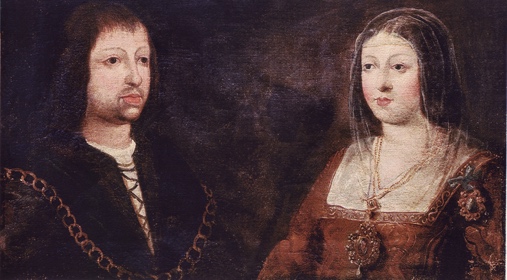
Wedding portrait of King Ferdinand of Aragon and Queen Isabella of Castile (15th c.)
5. Temmuz (literally "July" in Turkish)
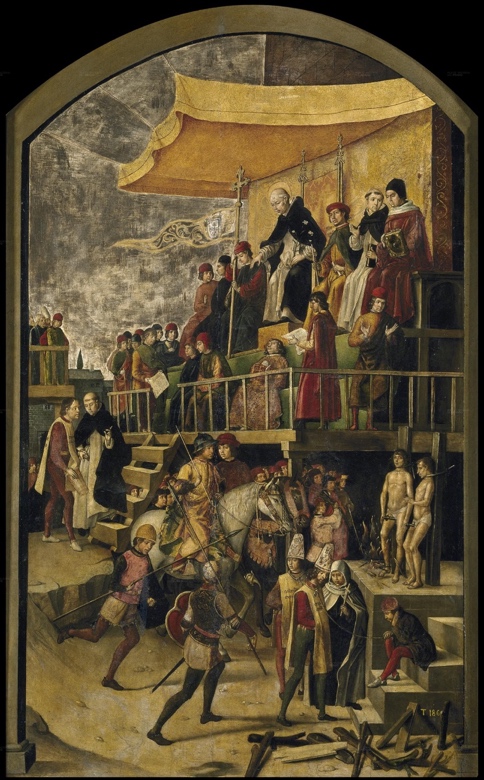
Saint Dominic Presides over an Auto da Fe (c. 1495)
The decree by Isabella and Ferdinand ordering the expulsion of Jews gave them until July 31 of 1492.
Text: Muslim call to prayer (ezan)
Allahu ekber Allahu ekber x2
God is great
Eşhedu enne ilahe illallah x2
I bear witness that there is no god but God
Eşhedu enne Muhammeden Resullullah x2
I bear witness that Muhammed is the messenger of God
Hayyalel selah x2
Come to prayer
Hayyalel felah x2
Come to contentment
Allahu ekber Allahu ekber
God is great
La ilahe ilallah
There is no god but God
6. A New Land, A New Music
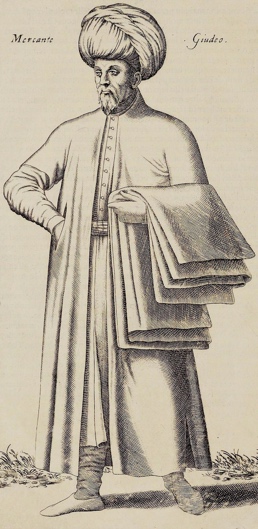
From Nicolas De Nicolay’s The first four books of Oriental navigations and peregrinations made in Turkey (Venice, 1580)
Text: anonymous
ay mancebo, mancebo
oh young man, young man
ay mancebo tan gentil
oh young man, so genteel
si para Francia vos ibax
if you're to go to France
al mi amor saludarex
greet my love (while you're there)
III. SİNAN
The third narrative tells the story of Mimar Sinan, forcibly taken by the Ottomans as a young Orthodox Christian boy, who came to embrace his new Muslim identity and rose to great heights in mid 16th century as the master architect of some of the greatest mosques in the world.
7. A Confrontation in Anatolia
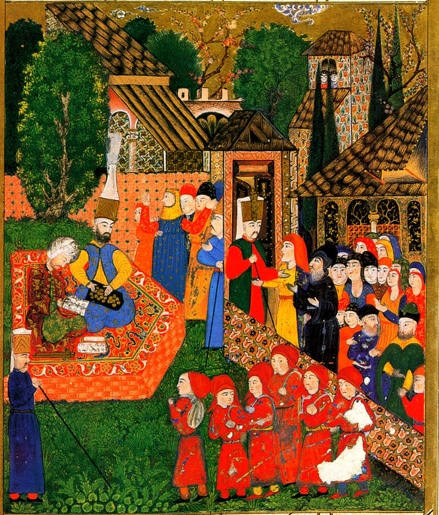
Recruitment of Christian boys in a folio from Süleymannâme (1558) by Arif Çelebi
Kyrie eleison
Lord have mercy
8. Rise Through the Barracks
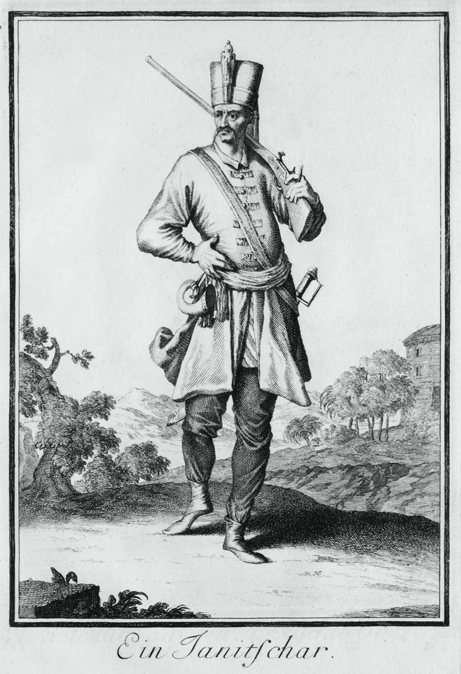
From Abraham a Sancta Clara’s Neu-eröffnete Welt-Galleria
(Nuremberg, 1703)
9. The Owl Song
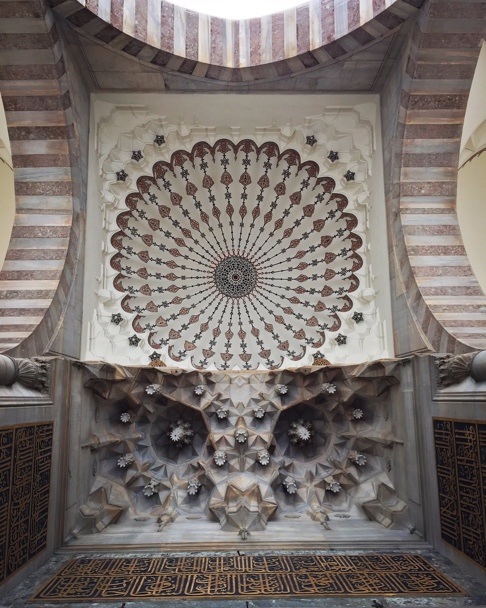
Süleymaniye mosque mukarnas. Photo by Furkan Al.
Sinan often placed the figure of an owl looking down at those entering mosques.







